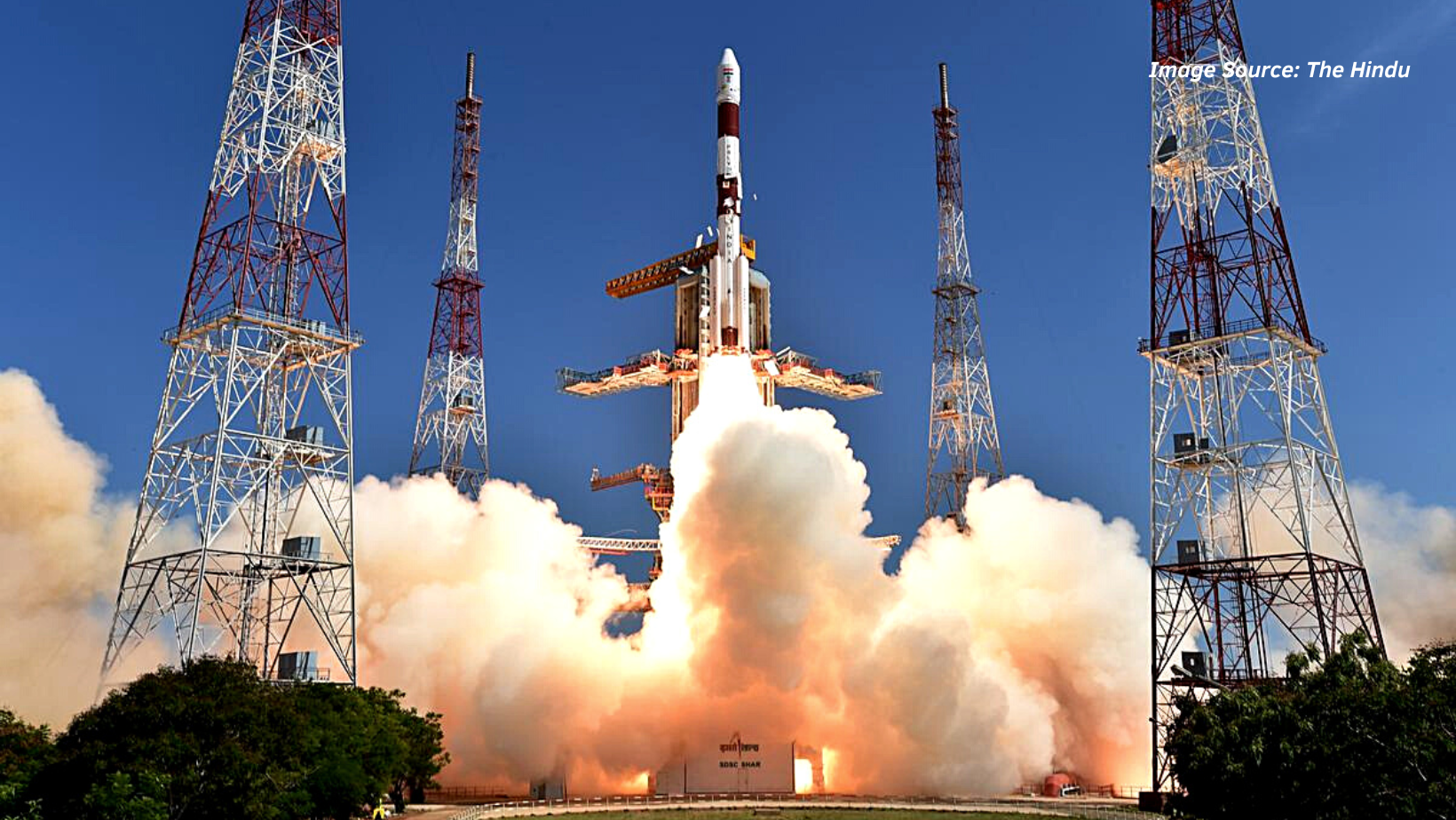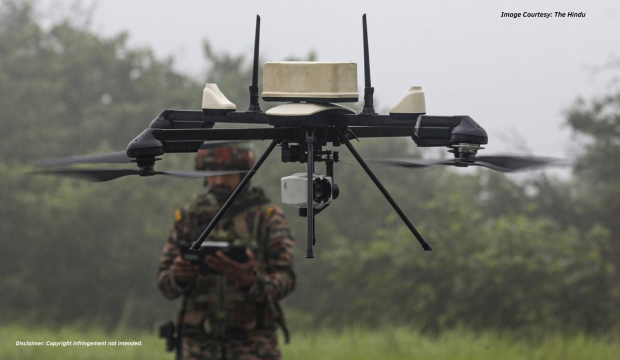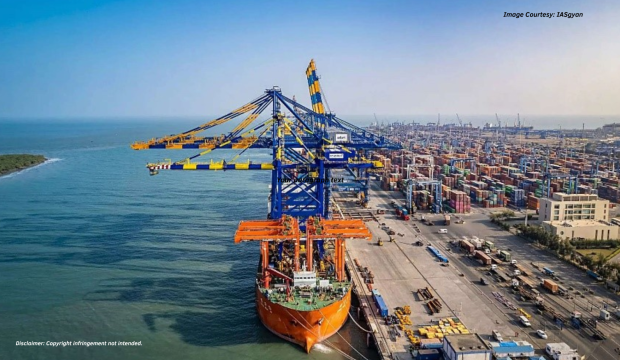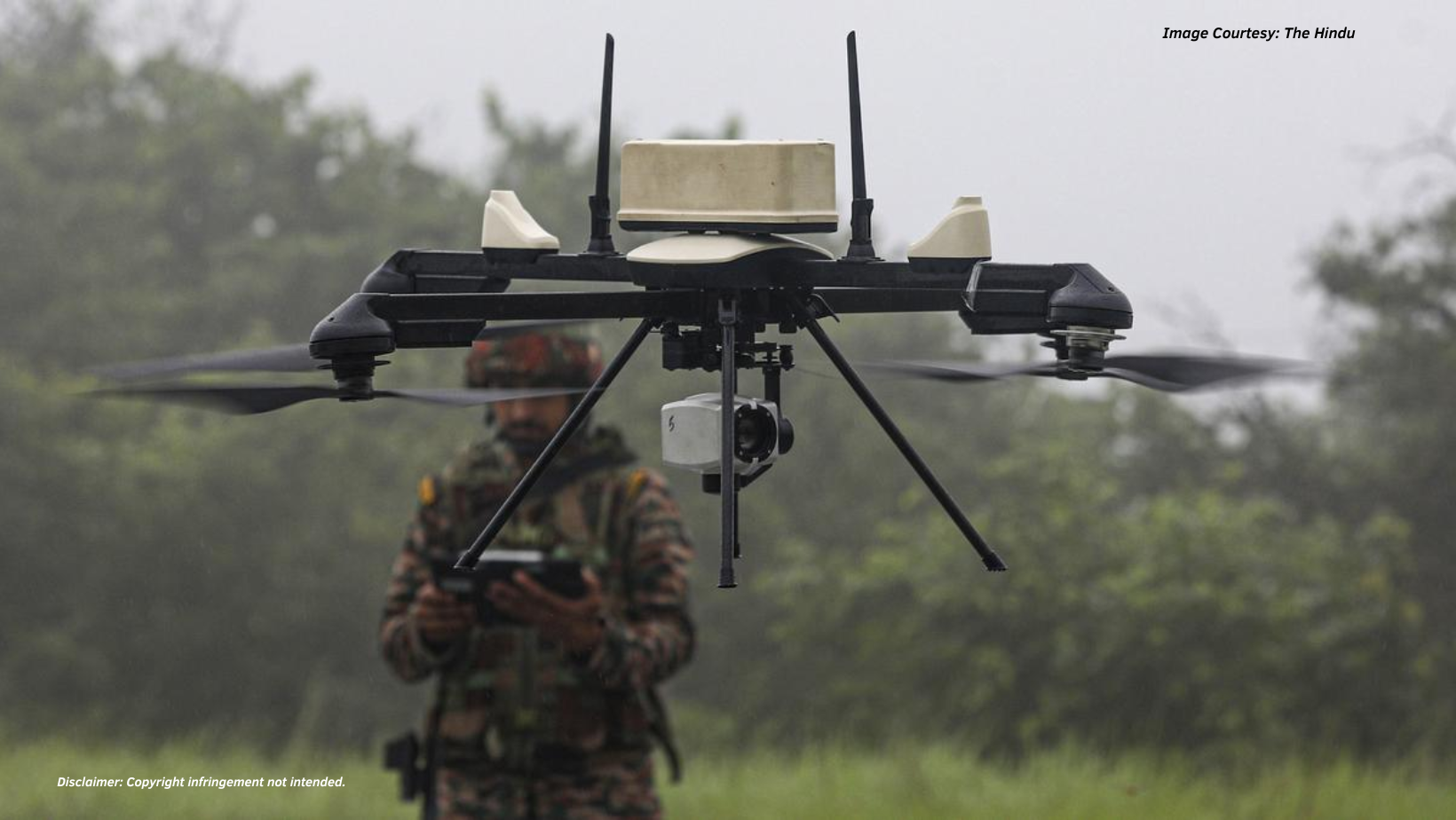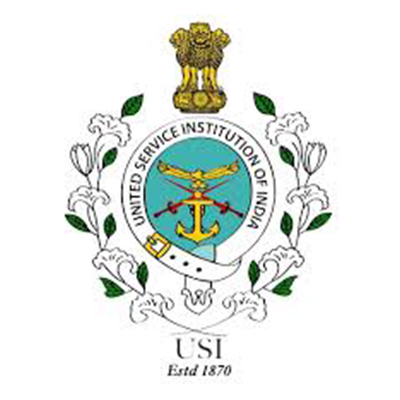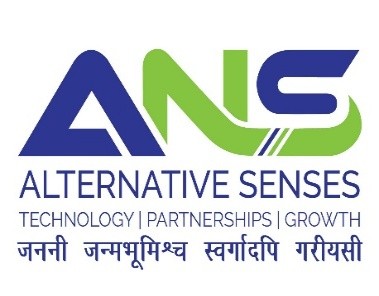Abstract
There is a quantum jump in research and development in next generation communication technologies being used in civil sector. However, the military remains a step behind due to the myriad laws restricting transfer of technology and lack of clear policy on transparent exchange of information between the civil sector and the military. The scenario however remains grim in space capabilities of the Indian Armed Forces. In Civil Space Sector, private sector participation has now been allowed and this has led to a whole new generation of entrepreneurs participating in the Indian space journey. It is a positive sign for the space industry as a sector which was till recently under government control and has now been open to private players leading to infusion of better technology and rapid advancement. In the defence sector, Indian Air Force and Indian Navy have their own satellites for navigation, weather information and communication requirements. Indian Army, which was deficient of this critical asset, has now staked its claim and is already in the process of acquiring an advanced Satellite GSAT 7B. However, the exchange of information and capabilities of space assets of Civil Space sector players with Indian Military need a major push to strengthen the Indian defence preparedness in space warfare.
Existing Organisation: Indian Defence Sector
The Indian defence space capabilities have suffered in the past due to various issues such as a cumbersome procurement process, poor civil-military relations and challenging inter-service integration. To enhance defence space capabilities, a strong collaboration is required between military and civilian institutions. Since Independence, India’s military and civilian space activities have been coordinated by the Indian Space Research Organization (ISRO), a civilian organization. To give a boost to the defence space sector, two new defence space agencies have been established in 2019, Defence Space Agency (DSA) and Defence Space Research Organization (DSRO). Defence Satellite Agency (DSA) controls several existing military organizations, such as the Defence Imagery Processing and Analysis Centre (DIPAC) and the Defence Satellite Control Centre (DSCC). It performs the tasks of integrating space assets from the Indian Army, Navy, and Air Force and develops defence space strategy. Defence Space Research Organization (DSRO) is a research agency geared toward facilitating the development of civilian space technology for military purposes. In July 2019, India’s first combined defence space warfare exercise took place with other nations, which demonstrated the importance of having access to space by utilising communication and reconnaissance satellites to integrate intelligence and firepower across the range of Indian military capabilities.1 The outcome of these developments has been the vociferous demand for establishment of a defence space service, which would ensure protection of India’s expanding defence satellite network. However, the requirement needs to be analysed in terms of long-term technological and financial assets required to support a separate space force.
Capabilities of Indian Defence Sector
Indian Armed Forces have communication and reconnaissance satellites, however, there is a urgent requirement to build more defence space assets to match with the adversaries. Indian space program presently pursued by the Indian Government is based on a bottom-to-top approach, with the capability being developed initially in launch segment before building capabilities in other diverse fields of space sector. With the recent privatization of the Indian space sector, rapid development in civil, commercial and defence programs is on the anvil. However, our country urgently needs to strengthen its position in defence space sector, as it requires more attention from a strategic viewpoint. Indian Navy’s communication satellite, GSAT-7, was launched in 2013. As a replacement for GSAT-7, Indian Navy is already in the process to procure advanced GSAT-7R satellite. for the Indian Air Force (IAF) communication satellite, GSAT-7A was launched by ISRO in 2018. IAF is now in the process of procurement of GSAT- 7C satellite, which will assist in navigation, ballistic missile alerts, enhanced intelligence, surveillance, and reconnaissance (ISR). Indian Army is in the process of acquiring GSAT- 7B satellite, which was long pending requirement and the first-ever dedicated communication satellite for the Indian Army.2 Till date, Indian Army is relying on shared satellite bandwidth in IAF and IN satellites to meet the requirements of Indian Army satellite communication. The Indian Defence forces also uses a variety of commercial satellites and those run by friendly foreign countries in its operations. Many of these are prohibitively expensive and carry the danger of service interruption in the event of emergencies. During the Kargil war in 1999, Indian Defence forces were not able to use Global Positioning System (GPS) in the conflict zone to assist its forces, as it is controlled by USA and encountered service interruption. Accordingly, on recommendations of Defence forces, project for development of indigenous navigational system, Indian Regional Navigation Satellite System (IRNSS), also called NavIC, was started by ISRO. IRNSS is an indigenous regional navigation satellite system to provide accurate positional information service to its users. It consists of a total of seven (07) satellites, three (03) in GEO and four (04) in GSO orbit.3 For military users, IRNSS will provide encrypted service for authorised users and will prove to be a game changer in conflict scenarios as it will enhance the navigational capabilities of our forces without any chances of disruption. It is therefore crucial to aggressively improve defence space capabilities as part of the “militarization of space” as India works to reduce defence spending and achieve self-reliance in the field. This includes launching more defence satellites into orbit, and procurement of sophisticated jammers for protection of satellites from electronic assaults.
Mission Defence Space Programme: A step towards Civil-Military Fusion in Space Sector
“Space technology is an example of what security will mean for any strong nation in the future. Mission Defence Space will not only strengthen the forces but also provide new and innovative solutions” said Prime Minister Narendra Modi at the Annual Defence Expo 2022 held in Gujarat.4 Under the Mission Defence Space programme, seventy-five (75) challenges in the space sector for private firms to work on, based on defence requirements in the space domain, have been identified which are further classified into five technology heads – launch systems, satellite systems, communication and payload systems, ground systems, and software. Aim of Mission Defence Space programme is to build technology enablers in Space Sector for the defence services. This is a step in right direction for Civil-military liaison in space sector and will reap rich dividends in the times to come. In addition, there is a requirement to refine Indian Defence Space policy to provide strategic direction to harness the country’s immense potential in space sector. It should aim to outline measures to promote a safe and more secure defence space environment and enable industry, academia and defence organizations to exploit space science technology and transfer and promote broader links between experts in the commercial, civil and defence fields to sustain, build and share space security expertise including understanding of the emerging geopolitics of space.
Requirement of Defence Civil Space Programme
There is an urgent need for creating organizations and HRD/training for establishing a space culture. The Indian space program should be committed to a dual role, where both the civil and military usage is embedded in the development of space program. The specific goals of the space program should be to promote regional cooperation to further domestic, national security and foreign policies, enhance the economic competitiveness and scientific and technical capabilities, encourage state, local, and private sector investment in space technologies. Further, the space program should identify a set of guidelines for the major areas of civil-space, national security-space, commercial-space and inter-sector domain. In addition, Ministry of Defence (MoD) and ISRO should closely coordinate defence and intelligence space activities, integrate space architectures to the maximum extent feasible and continue to modernize and improve their respective activities to act against and respond to changing threats, environments and adversaries. Research must be carried out towards obtaining niche and original knowledge-based space technologies. Capabilities need to be built up to evolve and support space transportation systems and infrastructure necessary to meet national security requirements. To further bolster deterrence capability in space, ballistic missile defence capability through space should be vigorously pursued by joint Defence-Civil space program. Anti-satellite (ASAT) weapons used for destruction of satellite in space and used as a deterrent should be produced indigenously to be ready to face challenge when the space domain becomes more competitive. Indian Defence Space Policy should thus promote a safe and secure space environment and enable industry, academia and defence to work towards the goal of balancing the asymmetry with our adversaries in defence space sector.
Setting up of IN-SPACe: A Step in Right Direction
The recent initiative taken by the Indian Government to end the monopoly of ISRO in Satellite launching and building by setting up of Indian National Space Promotion and Authorisation Centre (IN-SPACe)5 to allow private players to participate in producing, assembling and integrating launch vehicles initially followed by satellites is the step in right direction. Thus, by allowing private players in space sector signals the heralding of a golden era in Indian Space industry which will further enable the better technology and increase competition resulting in better quality products. Such initiative must also be allowed in Indian defence space sector, where the private industry should be incentivised by allowing research and production of defence space capabilities. The multi-billion investment being made in private Space Sector will act as windfall to financially strapped defence space sector. The tailoring of commercial space systems to military use represents a significant challenge. Multiple spectra of approaches need to be evaluated, ranging from straight leasing to designing architecture for defence needs.
Involvement of Academia in Civil Military Defence Space Projects
Universities in the country must serve as primary vehicles for space innovation for the defence. Our country’s innovation strategy must employ universities to serve as the foundation for the innovation for military space applications to strengthen the defence sector. Military-civil fusion strategy should be based on our country’s drive to innovate using its reputed colleges and universities such as IITs and Indian Institute of Science (IISc) with its drive to accelerate innovation for its defence space sector. The innovation strategy’s interdependence with our country’s military-civil fusion system should enable it to leverage the global research and development network of the country’s own reputed colleges and universities. The intersection of military-civil fusion and India’s innovation strategy will put international commercial and academic research partnerships focused on dual-use technologies in space sector to contribute to India’s defence capabilities. Research on dual-use technologies should be encouraged and incentives offered to academia for such projects. The next step is setting up of joint space labs of Civil-military for collaboration in military-civil fusion projects. Indian Armed Forces must encourage officers and men to take up projects in defence space sector which will enhance the deterrence capabilities in space. Officers should be selected to attend space application courses available in the country and abroad to learn the latest applications in space sector and can further be utilised for developing defence space applications with the private industry. Some of the areas for joint Military-Civil cooperation in defence space sector are as follows :–
To develop military communication satellites for high speed communication among all military units, which is essential in the emerging military doctrine of network centric warfare, which relies heavily on the use of high speed communication to allow commanders at all levels to have real-time information of the battlefield.
To develop reconnaissance satellites for defence applications, which is essentially an observation or communications satellite deployed for military intelligence applications to scan a vast area which can help in monitoring adversary activities and perform various military operations during a conflict in large geographic area.
- To utilise existing civil satellite-based multinational disaster management organisations to assist in military search operations by engaging surveillance satellites to locate infiltrating enemy columns by quickly altering the flight patterns of the surveillance satellites to zoom immediately over a suspected infiltrating zone and provide feeds to the military for quick response.
- Joint collaboration between Defence and ISRO for development of Space Defence Force tasked for monitoring outer space for threats such as attack from suspicious artificial satellites and build a defence architecture for joint projects in this nascent field. With the rapid militarisation of space by our adversaries and developed countries in the world, India needs to build capability in this field by deploying more military satellites for imaging and communication and development of space weapons (anti-satellite weapons) that can attack suspected spy satellites in orbit or disable missiles travelling through space.
Self-Reliance in Indian Defence Space Sector: Participation of Private Players
Despite innovation dominance and technology independence being key drivers of military-civil fusion, India largely remains reliant on access to the international space technology ecosystem to drive pursuit of its long-term goals in defence space sector. The Indian Armed forces uses a variety of commercial satellites run by friendly foreign countries in its operations, which are prohibitively expensive and carry the danger of service interruption in the event of emergencies. The need of the hour is to become self-reliant in defence space sector by launching indigenous satellites which cater exclusively for defence services. Universities and the industry should serve as the foundation for the defence space technology innovation system to fill the gap. Due to the foundational role of universities and enterprises in this innovation system, providing these institutions with the resources and prestige necessary to drive the country’s innovation becomes a priority. Universities can thus play a major role in contributing to military-civil fusion and their collaborations with the commercial sector. These collaborations will be identified as industry-university-research alliances, which will serve as a means of promoting the two-way transfer of military-civil technology for military-civil fusion. Indian Institute of Technology (IITs) can become centre of education that leverages such collaborations. These technical institutes of world-wide repute can host technology transfer with foreign universities and further collaborate with renowned foreign research institutes to support the technology transfer of research outcomes. The defence sector public enterprises should collaborate with these institutes for military scientific research, production, and maintenance of defence space assets. This type of military-civil fusion will further augment the critical role of universities and the industry in India’s defence sector development.
Conclusion
The requirement is to build a trust among the civil and defence sector with transparent exchange of information. We should encourage space scientists and engineers from ISRO on deputation to Indian Defence Space establishments such as DSA where they can work along with defence officers in defence space projects. A healthy environment with transparent exchange of information and expertise needs to be built to gain dividends and with the advancement in space technology and opening of private sector for exploration in space technology is a healthy sign for the advancement in this field as the monopoly of ISRO has been done away with. There is a requirement of providing more bandwidth to the defence on commercial satellites to gain more information in navigation, information on adversary troop movement and tactical information which will assist in building a defensive posture and planning for operations. Civil-military liaison in defence space sector will further get a boost by participation of private space start-ups in tailoring of commercial space systems to military use. Mission Prarambh by ISRO has already heralded a beginning of a new era in India’s space history with the launch of Vikram-S, a sub-orbital launch vehicle from M/s Skyroot Aerospace Private Ltd6, which marks the first launch of a launch vehicle built by a private company in India. The opening of space sector for Indian private companies will certainly act as a boost for the cash-strapped Indian Defence Space sector, where private firms will innovate and design defence satellites for reconnaissance, navigation, tracking, military communications and ASAT applications.
DISCLAIMER
The paper is author’s individual scholastic articulation and does not necessarily reflect the views of CENJOWS. The author certifies that the article is original in content, unpublished and it has not been submitted for publication/ web upload elsewhere and that the facts and figures quoted are duly referenced, as needed and are believed to be correct.
References
- Abhishek Bhalla, “Skylight: Know all about Indian Army’s space domain exercise”, India Today, 05 August 2022. https://www.indiatoday.in/india/story/indian-army-space-domain-exercise-skylight-satellite-based-systems.html
India Today Web desk, “What is GSAT-7B satellite that will boost Indian Army’s communication capabilities?”, IndiaToday, 23 March 2022. https://www.indiatoday.in/science/story/what-is-gsat-7b-satellite-that-will-boost-indian-army-s-communication-capabilities.html
Wikipedia, s.v. “Indian Regional Navigation Satellite System”, last modified 30 Dec2022,05:13,https://en.wikipedia.org/wiki/Indian_Regional_Navigation_Satellite_System
Anwesha Madhukalya, “DefExpo 2022: PM Modi inaugurates defence expo, lays foundation of Deesa airfield”, Business Today, 19 Oct 2022, https://www.businesstoday.in/latest/economy/story/defexpo-2022-pm-modi-augurates-defence-expo-lays-foundation-of-deesa-airfield.html
Wikipedia, s.v. “Indian National Space Promotion and Authorisation Centre”, last edited on 19 November 2022, at 07:14,https://en.wikipedia.org/wiki/Indian_National_Space_Promotion_and_Authorisation_Centre
Outlook Business Team, “Mission Prarambh: India’s First Privately Built Rocket Lifts Off, All You Need To Know”, Outlook,18 Nov 2022 12:32 PM, https://www.outlookindia.com/business/isro-mission-prarambh-india-s-first-privately-built-rocket-lifts-off-all-you-need-to-know-news.html


